Current Research
The NEOWTP is working closely with the URI Laboratory of Soil Ecology and Microbiology (LSEM) on multiple research projects involving onsite wastewater treatment systems (OWTS), including:
- The impacts of climate change on OWTS
- Advanced OWTS performance evaluation
- New nitrogen reducing drainfield technology
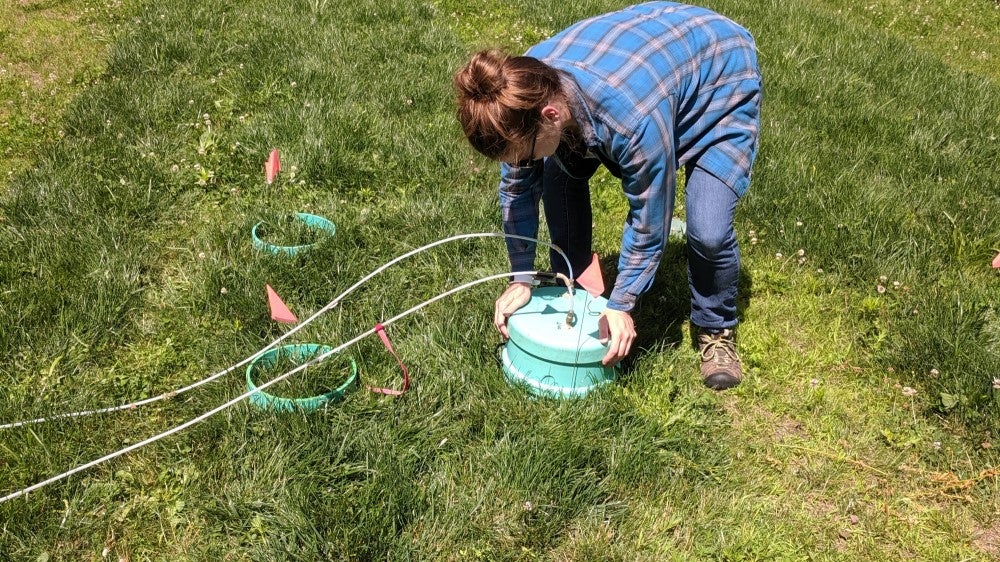
NEOWTP staff works closely with LSEM researchers and other partners to plan and develop research projects, collect and analyze data. Researchers from LSEM routinely participate in our training program to share results with the wastewater community.
OWTS and Climate Change
Warming temperatures and sea level rise due to climate change will affect the functioning of OWTS. NEOWTP and LSEM researchers are studying the likely impacts to OWTS function and will offer regulatory agencies and practitioners strategies to help mitigate the effects of climate change on OWTS, particularly in coastal areas. Recently completed studies suggest elevated groundwater tables and storm surge have noticeable impacts on soil treatment area performance by reducing the amount of unsaturated soil available to treat wastewater. Ongoing research focuses on groundwater table response to sea level rise and subsequent changes to the soil treatment area. Additionally, LSEM researchers hope to identify specific plant species able to reduce nutrient loading from OWTS during the growing season and offer a new, low-cost drainfield design strategy to help mitigate impacts of affected OWTS in at-risk coastal areas.
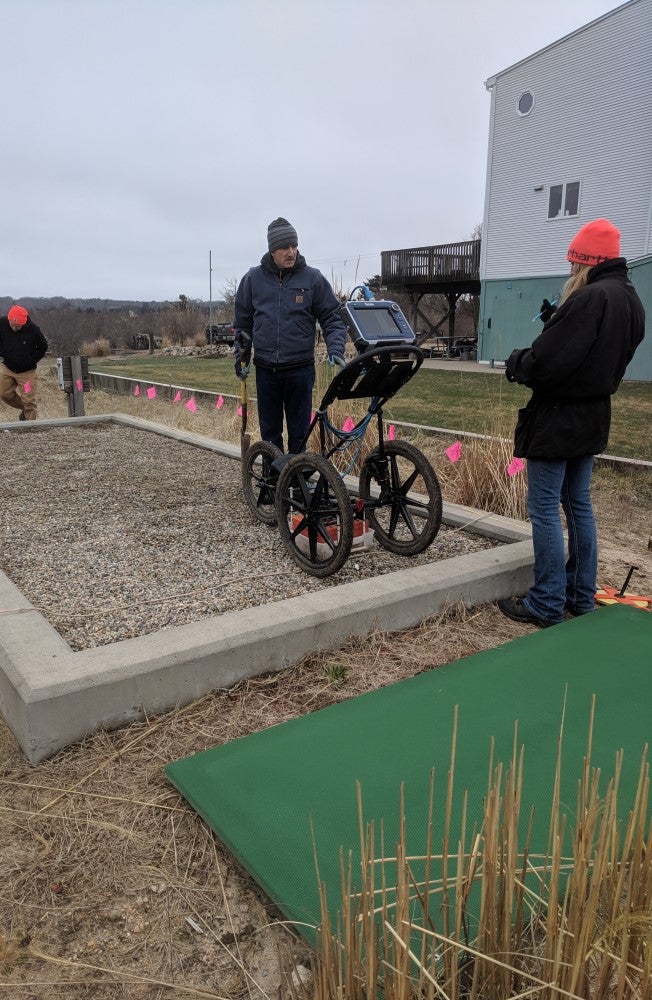
Published research on how OWTS are impacted by climate change
An overview of how coastal septic systems are threatened by rising groundwater tables and storms by Alissa Cox.
Cox, A.H., M. J. Dowling, G. W. Loomis, S. E. Engelhart & J. A. Amador. 2020. Geospatial modeling suggests threats from stormy seas to Rhode Island’s coastal septic systems. Journal of Sustainable Water in the Built Environment. 6(3):04020012. DOI: 10.1061/JSWBAY.0000917
A. H. Cox, D. Surabian, G. W. Loomis, J. D. Turenne & J. A. Amador. 2020. Temporal Variability in the Vertical Separation Distance of Septic System Drainfields Along the Southern Rhode Island Coast. Water Air & Soil Pollution. 231(107). DOI: 10.1007/s11270-020-04488-z
Cox, A.H., G.W. Loomis, and J.A. Amador. 2019. Preliminary Evidence That Rising Groundwater Tables Threaten Coastal Septic Systems. Journal of Sustainable Water in the Built Environment. 5(4): 04019007. DOI: 10.1061/JSWBAY.0000887.
Cooper, J.A., G.W. Loomis, and J. A. Amador. 2016. Hell and high water: Diminished septic system performance in coastal regions due to climate change.PLoS ONE 11: e0162104. DOI: 10.1371/journal.pone.0162104
Amador, J.A., G. Loomis, and D. Kalen. 2014. Soil-Based Onsite Wastewater Treatment and the Challenges of Climate Change. Proceedings of the Soil Science Society of America Onsite Wastewater Conference, Albuquerque, NM. Currently on line in Soil Science Society of America, Full Conference Proceedings pg 6-11.
Evaluating Advanced N-removal OWTS Technologies
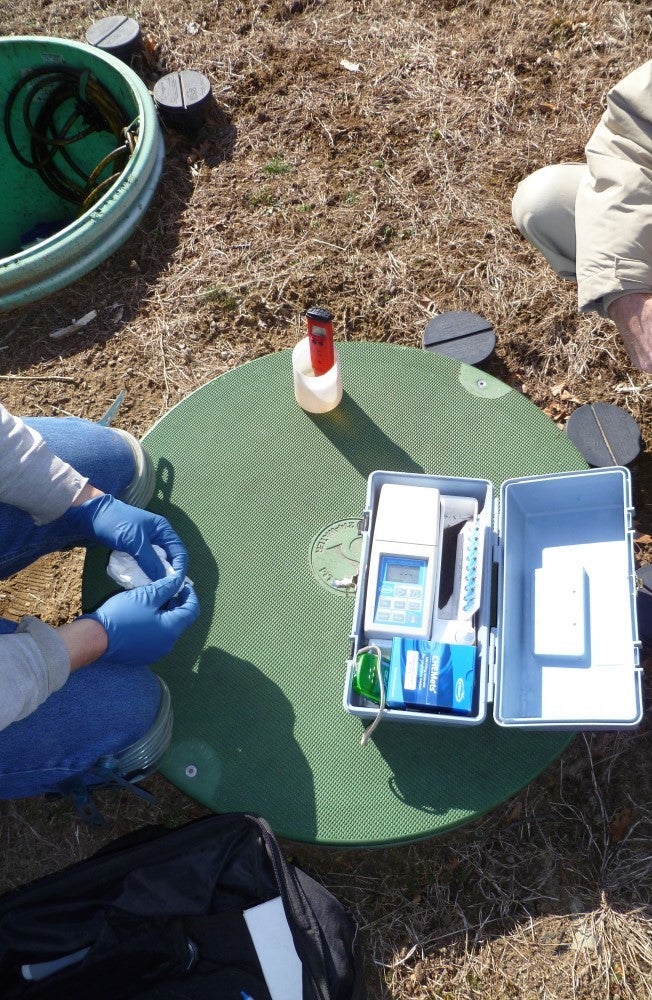
Wastewater from OWTS can serve as a source of nitrogen in coastal watersheds, leading to eutrophication and decreases in water quality. Multiple advanced OWTS technologies have been designed to remove forms of nitrogen that conventional systems cannot, in order to better protect coastal waterbodies. Since 2015, LSEM researchers have been studying the effectiveness of advanced OWTS nitrogen removal and efforts are continuing to collect data from multiple technologies in Rhode Island and Massachusetts in order to assess the efficiency of advanced N-removal OWTS technologies. Increased understanding of system performance will enable more proactive maintenance and management, helping to optimize nitrogen removal and better protect coastal ecosystems.
Published research on advanced N-removal technologies
Ross, B. N, S. K. Wigginton, A. H. Cox, G. W. Loomis, and J. A. Amador. 2020. Influence of season, occupancy pattern, and technology on structure and composition of nitrifying and denitrifying bacterial communities in advanced nitrogen-removal onsite wastewater treatment systems. Water 12:2413. DOI: 10.3390/w12092413
Ross, B. N., K. P. Hoyt, G. W. Loomis, and J. A. Amador. 2020. Effectiveness of advanced nitrogen-removal onsite wastewater treatment systems in a New England coastal community. Water, Air and Soil Pollution 231:1-10. DOI: 10.1007/s11270-020-04911-5
Ross, B. N., B. V. Lancellotti, E. Q. Brannon, G. W. Loomis, and J. A. Amador. 2020. Greenhouse gas emissions from advanced nitrogen-removal onsite wastewater treatment systems. Science of the Total Environment. DOI: 10.1016/j.scitotenv.2020.140399
Ross, B. N., G. W. Loomis, K. P. Hoyt, and J. A. Amador. 2018. User-based photometer analysis of effluent from advanced nitrogen-removal onsite wastewater treatment systems. Water, Air Soil Pollution 229(12):389. DOI: 10.1007/s11270-018-4039-z
Wigginton, S. E. Brannon, P. J. Kearns, B. Lancellotti, A. Cox, G.W. Loomis, and J.A. Amador. 2018. Nitrifying and denitrifying bacterial communities in advanced N-removal onsite wastewater treatment systems. Journal of Environmental Quality 47:1163-1171. DOI: 10.2134/jeq2018.03.0116
Amador, J.A., J.H. Görres, G.W. Loomis, and B. V. Lancellotti. 2018. Nitrogen Loading from Onsite Wastewater Treatment Systems in the Greater Narragansett Bay (Rhode Island, USA) Watershed: Magnitude and Reduction Strategies. Water, Air, Soil Pollution 229(3): 65. DOI: 10.1007/s11270-018-3714-4.
Lancellotti, B.V., G. Loomis, K. Hoyt, E. Avizinis, and J.A. Amador. 2017. Evaluation of Nitrogen Concentration in Final Effluent of Advanced Nitrogen-Removal Onsite Wastewater Treatment Systems (OWTS). Water, Air and Soil Pollution 228:383-298. DOI: 10.1007/s11270-017-3558-3
Lancellotti, B. V., R. J. Bercaw, G. W. Loomis, K. P. Hoyt, E. J. Avizinis, and J. A. Amador. 2016. Accuracy of rapid tests used for analysis of advanced onsite wastewater treatment system effluent. Water, Air and Soil Pollution 227:310-322. DOI: 10.1007/s11270-016-3023-8
Cooper, J. A., G. W. Loomis, D. V. Kalen, and J. A. Amador. 2015. Evaluation of water quality functions of conventional and advanced soil-based onsite wastewater treatment systems. Journal of Environmental Quality 44:953-962. DOI: 10.2134/jeq2014.06.0277
Evaluating N removal in Non-proprietary, Layered Soil Treatment Areas
To further address the issue of nitrogen (N) pollution from OWTS, URI has partnered with the Barnstable County (MA) Dept. of Health and the Environment (BCDHE) and the Wastewater Management Office in the Town of Charlestown, RI to test layered soil treatment areas (LSTA) to passively remove N from residential wastewater. Layered STA are designed to create conditions that promote microbial N removal by stratifying nitrification and denitrification processes within different layers in the LSTA. The top layer contains only sand, where oxic conditions in the sand promote nitrification of ammonium to nitrate. The underlying sand and sawdust layer (50:50 mixture) is the denitrification zone where anoxic conditions promote the conversion of nitrate to nitrogen gas. Unlike other advanced treatment technologies, LSTAs can be designed without incorporating proprietary technologies for N removal. While proprietary technologies and innovation will remain an important part of addressing OWTS nitrogen pollution in coastal communities, layered soil treatment areas may present another option for homeowners that is cost effective in removing nitrogen. This LSTA design is currently in the experimental phase with provisional approvals and installations in MA, and has been certified by RIDEM as an experimental drainfield technology, allowing us to pilot the design in Charlestown, RI. Preliminary results from the installed systems are promising, indicating that LSTA nitrogen removal rates are comparable to the existing approved proprietary technologies in MA and RI. We will continue to monitor systems for performance, and hope to see LSTAs become another approved pressurized drainfield option which also meets nitrogen removal requirements for both RI and MA.
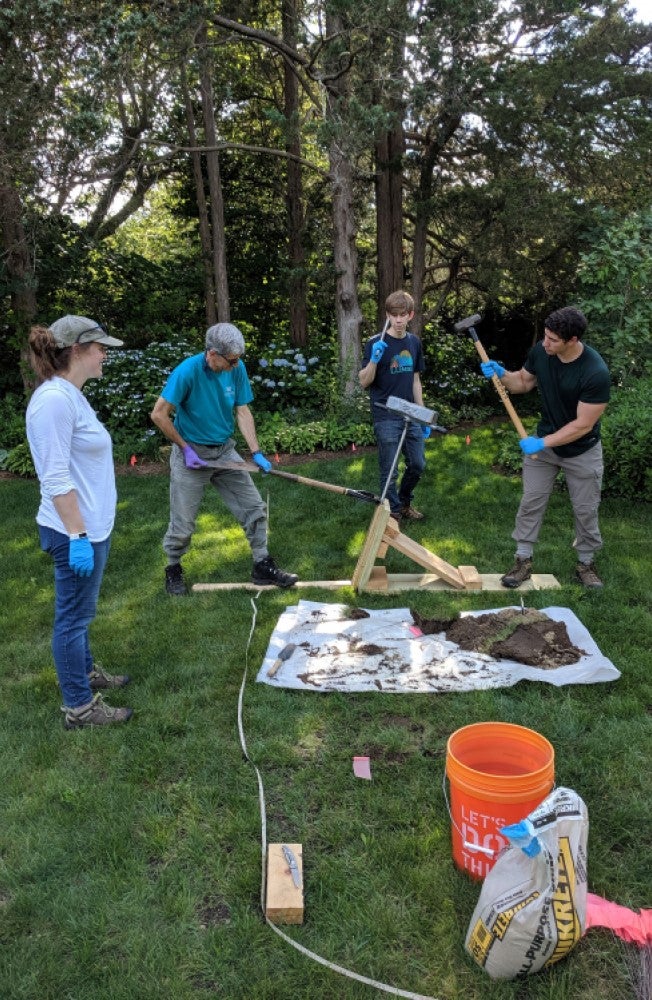
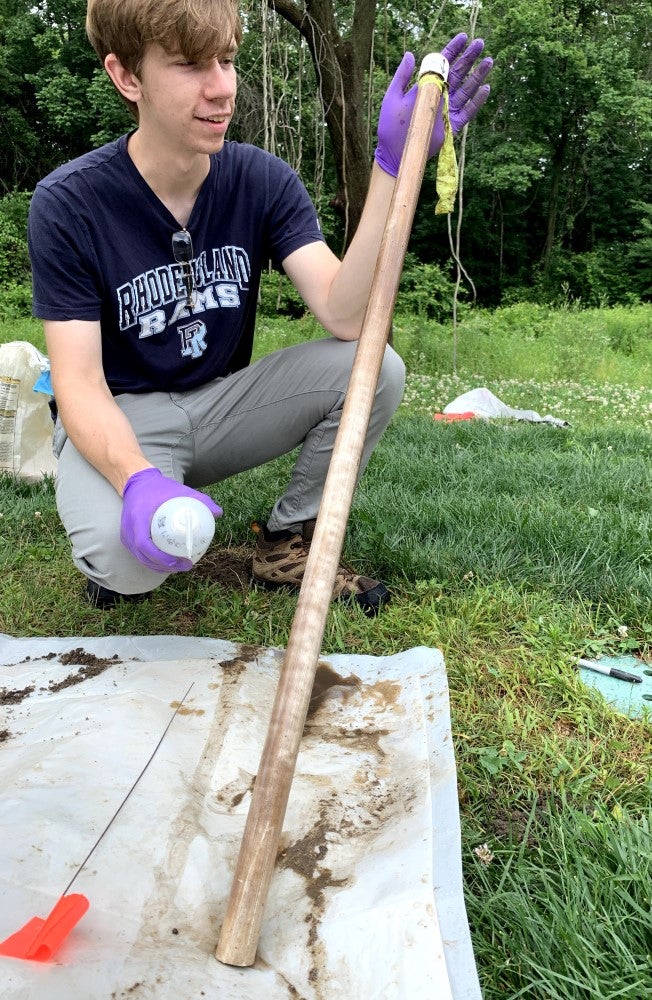
Published research on experimental Layered Soil Treatment Areas
An overview of LSTAs function and performance of systems in Barnstable County, MA by Sara Wigginton.
Wigginton, S. K., J. A. Amador, B. Baumgaertel, G. W. Loomis, G. Heufelder. 2021. Mesocosm- and Field-Scale Evaluation of Lignocellulose-Amended Soil Treatment Areas for Removal of Nitrogen from Wastewater. Water 13(15):2137. DOI: 10.3390/w13152137
Wigginton, S. K, G. W. Loomis, and J. A. Amador. 2020. Greenhouse gas emissions from lignocellulose-amended soil treatment areas for removal of nitrogen from wastewater. Science of the Total Environment 744:140936. DOI: 10.1016/j.scitotenv.2020.140936
Cox, A. H., S. K. Wigginton, and J. A. Amador. 2020. Structure of greenhouse gas-consuming microbial communities in surface soils of a nitrogen-removing experimental drainfield. Science of the Total Environment 739:140362. DOI: 10.1016/j.scitotenv.2020.140362.
Previous Demonstration & Research Projects
Published research on other aspects of onsite wastewater treatment
Cooper, J. A., G. W. Loomis, D. V. Kalen, and J. A. Amador. 2015. Evaluation of water quality functions of conventional and advanced soil-based onsite wastewater treatment systems. Journal of Environmental Quality 44: 953-962. DOI: 10.2134/jeq2014.06.0277
McCray J.E., M. Geza, K.S. Lowe, M.B. Tucholke, A. Wunsch, S. Roberts, J. Drewes, J. Amador, J. Atoyan, D. Kalen, G. Loomis, T. B. Boving, and D. Radcliffe. 2011. Quantitative tools to determine the expected performance of wastewater soil treatment units – Guidance manual, toolkit user’s guide and visual-graphic tools. Water Intelligence Online, 1476-1777. DOI: 10.2166/9781843393955
Amador, J.A., D. A. Potts, G.W. Loomis, D. V. Kalen, E. L. Patenaude, and J. H. Gorres. 2010. Improvement of hydraulic and water quality renovation functions by intermittent aeration of soil treatment areas in onsite wastewater treatment systems. Water 2: 886-903. DOI: 10.3390/w2040886
2005-2006
NOAA Research Project
Evaluation of leachfield aeration technology for improvement of water quality and hydraulic functions in onsite wastewater treatment systems. This 2-year NOAA-Cooperative Institute for Coastal and Estuarine Environmental Technology (CICEET) research project is being conducted under the leadership of Principal Investigator Professor Jose’ Amador at URI CELS Laboratory of Soil Ecology and Microbiology. NEOWT Program staff (David Kalen, Holly Meehan and George Loomis, co-investigators supporting this research) assisted in identifying and evaluating research sites, obtaining state permits, negotiating conditions with project stakeholders, troubleshooting and on-site instrumentation.
2002 – 2003
USEPA – Block Island and Green Hill Pond Watershed Project
URI OWT Center working with USEPA, RIDEM, RIAES, RIICA, RICRMC, and Towns of Charlestown, Block Island and South Kingstown install 25 alternative onsite wastewater demonstration systems to replace failed septic systems under the auspices of the USEPA Block Island and Green Hill Pond Watershed Project. Performance of these systems reported to local through national audiences and to RIDEM TRC for review and policy decisions.
2001
Glocester, RI Onsite Wastewater Demonstration Project
This onsite wastewater demonstration project was funded by USEPA Section 319 Clean Water Act Funds administered by RIDEM. URI OWT Center and RI NEMO worked with RIDEM, RIAES, and RIICA partners to install two individual and four small community alternative demonstration systems to replaced failed systems in Chepachet Village. Performance of these systems reported to local through national audiences and to RIDEM TRC for review and policy decisions.
2000
EPA National Community Decentralized Wastewater Treatment Demonstration Project
Block Island and Green Hill Pond Watershed Project
Rhode Island Nonpoint Education for Municipal Officials (NEMO) and URI OWT Center crafts a $3 million USEPA grant proposal for the towns of Charlestown, Block Island and South Kingstown. Partners included RIDEM, RIAES, RIICA, and RICRMC. Overall goal of this project is to help these three Rhode Island communities to develop and expand their wastewater management programs, and to use their success to help illustrate how other communities throughout the US can achieve the same goals.
1996
National Onsite Wastewater Demonstration System Project – Phase II
URI OWT Center working under the auspices of a grant with USEPA, NSFC, RIDEM, RIAES, RIICA, and Towns of Charlestown and South Kingstown to install seven innovative and alternative experimental systems in the Green Hill Pond Watershed. Green Hill Pond is a poorly flushed coastal lagoon, sensitive to nitrogen inputs and closed to shellfishing due to high bacteria levels. Treatment and operational performance of these systems reported to local through national audiences and to RIDEM TRC for review and policy decisions.
1996
Rhode Island Aqua Fund Alternative Demonstration System Project
URI OWT Program operating under a RI Aqua Fund grant with RIDEM, RICRMS, EPA, RIAES, RIICA, and the communitites of Warwick, North Kingstown, and Portsmouth install 12 alternative onsite wastewater systems to demonstrate technologies to help protect Narragansett Bay. Treatment performance of these systems reported to local and national audiences and to RIDEM TRC to facilitate policy decisions.
1996
Warwick Alternative System Deomonstration System Project
URI OWT Program, working under the auspices of a grant with RDEM, RICRMC< EPA< RIAES< RIICA, and City of Warwick install six innovative and alterative experimental systems. Performance of these systems reported to RIDEM TRC for review and policy decisions.
1985 and 1987
National Sea Grant Project
Nitrogen reduction systems treatment evaluations conducted over a 5 year period.
